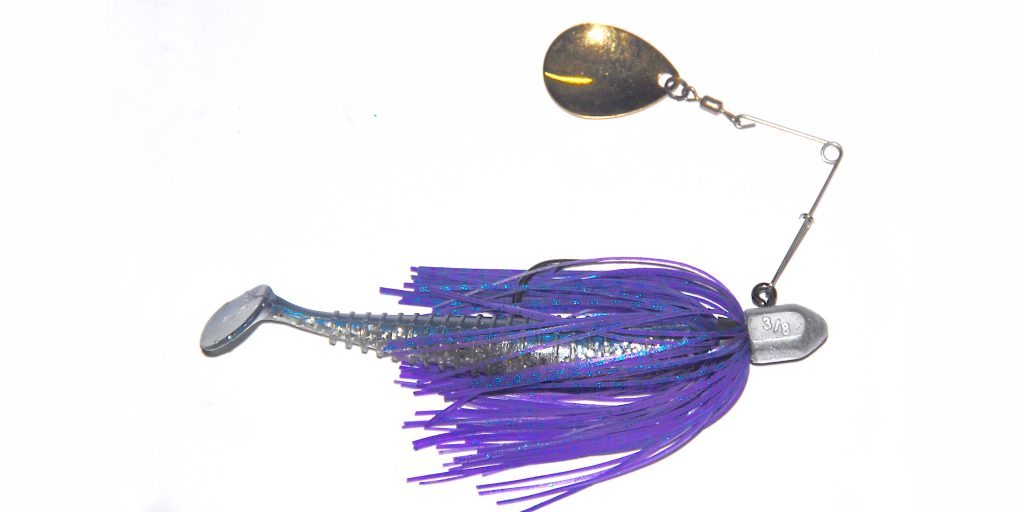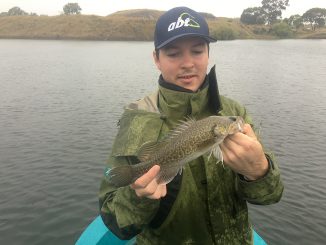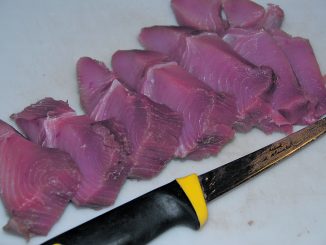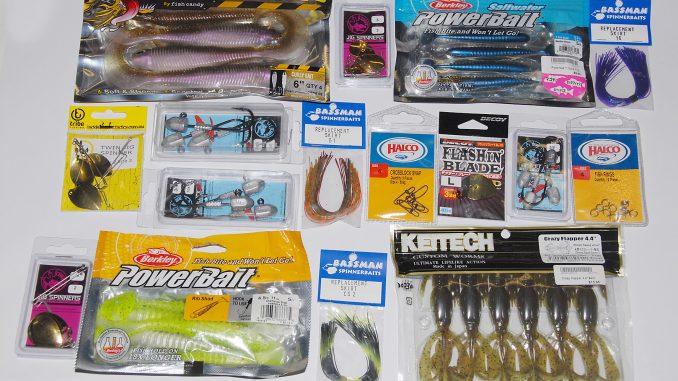
by Gordon Macdonald •
There are many factors believed to trigger a strike from predatory fish species. Vibration, flash, erratic movement, colour, curiosity, territorial aggression and scent are a few of the more prominent factors. For anglers, getting as many of these factors into your presentation as possible often means the difference between success and failure.
While there are many great lures on the market, and many can be enhanced to make them more attractive to certain species. This is especially the case with soft plastics. Most of these emit great action yet lack flash and vibration. Thinking anglers can solve this problem with a little ingenuity.
Additionally, many anglers will have a particular profile or style of soft plastic that they like to fish in a certain area, however some days they will need a little more enticement. Adding blades to your jighead rigged plastics will increase the vibration and flash emitted. Various skirting materials, such as spinnerbait skirts, add pulsing movement and colour to your offering.
Having numerous soft plastic styles and colours, various blade sizes, styles and finishes and a selection of spinnerbait skirts at your disposal will allow you to customise a lure to suit your situation. Various jighead weights allow a lure to be customised for all water depths. Combined, this gives you a massive array of lure options.
This is especially handy when you’re going to fish unfamiliar water and aren’t sure what depths or types of terrain the fish are holding at. You can quickly adjust or create a new lure in the desired colour, weight and action using the components at your disposal.
While getting some stuff together for an upcoming cod fishing trip to Glenlyon Dam, I began exploring a few options. Big and boisterous is usually best for cod, so I have rigged many larger plastics as well as some smaller offerings to tempt the golden perch population.
Although I already have a healthy box of spinnerbaits, I additionally created some larger profiled, big bladed baits featuring some of my favourite plastics. I would also have liked to use ZMan or Boom Bait plastics, due to their durability. However these plastics feature the 10X material, which reacts badly with spinnerbait skirt material and other plastics, so I needed to use other brands for pre-rigged offerings.
If you’re going to make up baits featuring plastics made from 10X, rig them, use them and then disassemble them, otherwise you’ll just have a big gooey mess in your bait box next time you open it. Let’s look at a few different ways to enhance your soft baits with blades and skirts.
These are just a few possibilities for your own creations using numerous types of blades and spinnerbait skirts. The options are endless and you can create an offering with the right colour, profile, weight and action to suit your chosen species or fishing situation.
Step 1.
There are a lot of great plastics and components you can use. These are the items the author started with to create some lures – the Bassman spinnerbait skirts, Decoy Flashin’ Blade jig blades, Halco Fish Rings and Crosslock Snaps, Norman Speed Clips and TT HeadlockZ jigheads will be used to rig the PowerBaits, Keitechs and Chasebaits. You can keep excess components to quickly create a few specific offerings while on the water. Tackle Tactics have a great array of single, and twin bladed arms that easily attach to any jighead under their TT and Tribe brands.
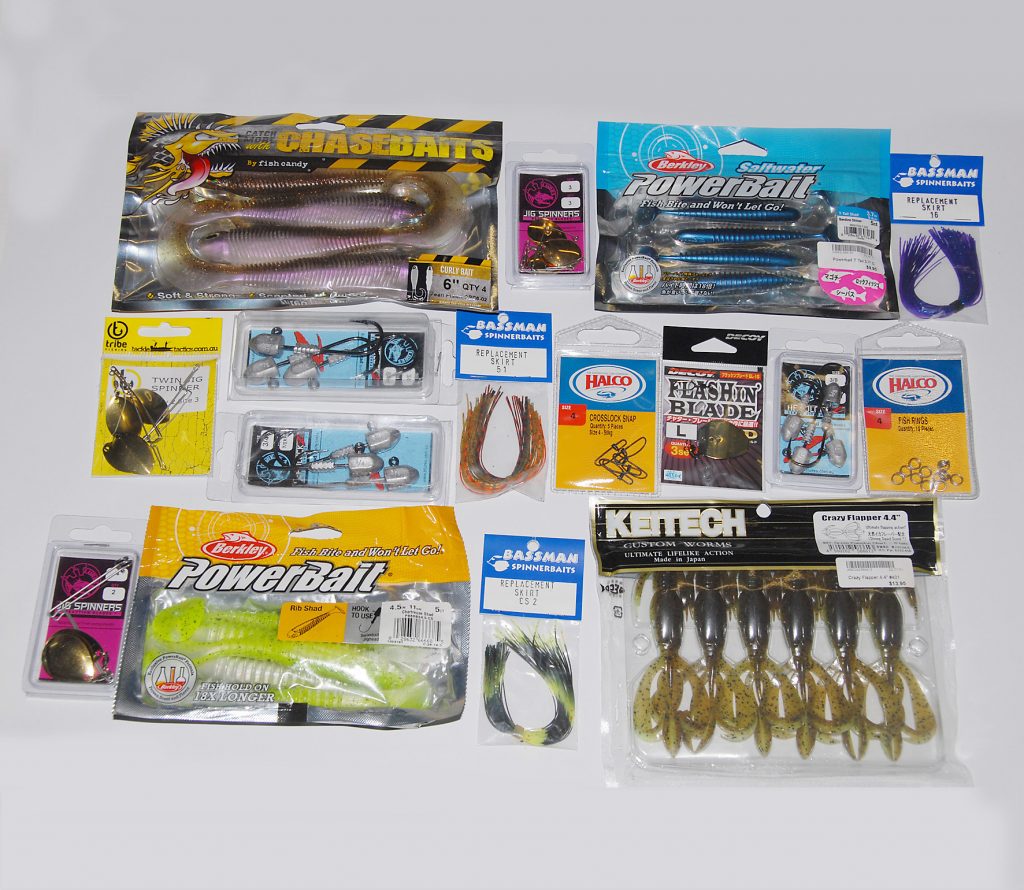
Step 2.
To make the first lure, the author used a PowerBait 4.5” Rib Shad, TT 3/4oz 7/0 HeadlockZ, TT HD no. 4 Jig Spinner and a Bassman spinnerbait skirt. For a slightly larger profile, the Keitech 6.8” Fat Swing Impact would be suitable.
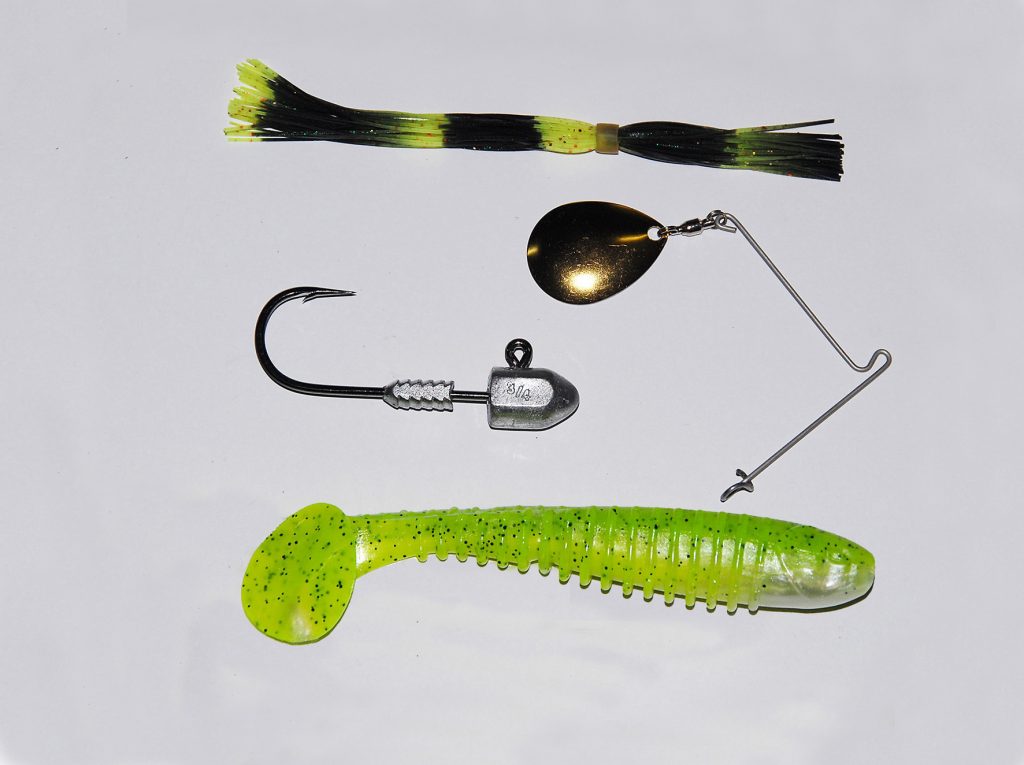
Step 3.
You’ll notice that the band on a spinnerbait skirt is not in the middle. This is so that the longer side can fold back and be a similar length as the shorter side. Push the hook point through the retainer band from the longer side as shown.
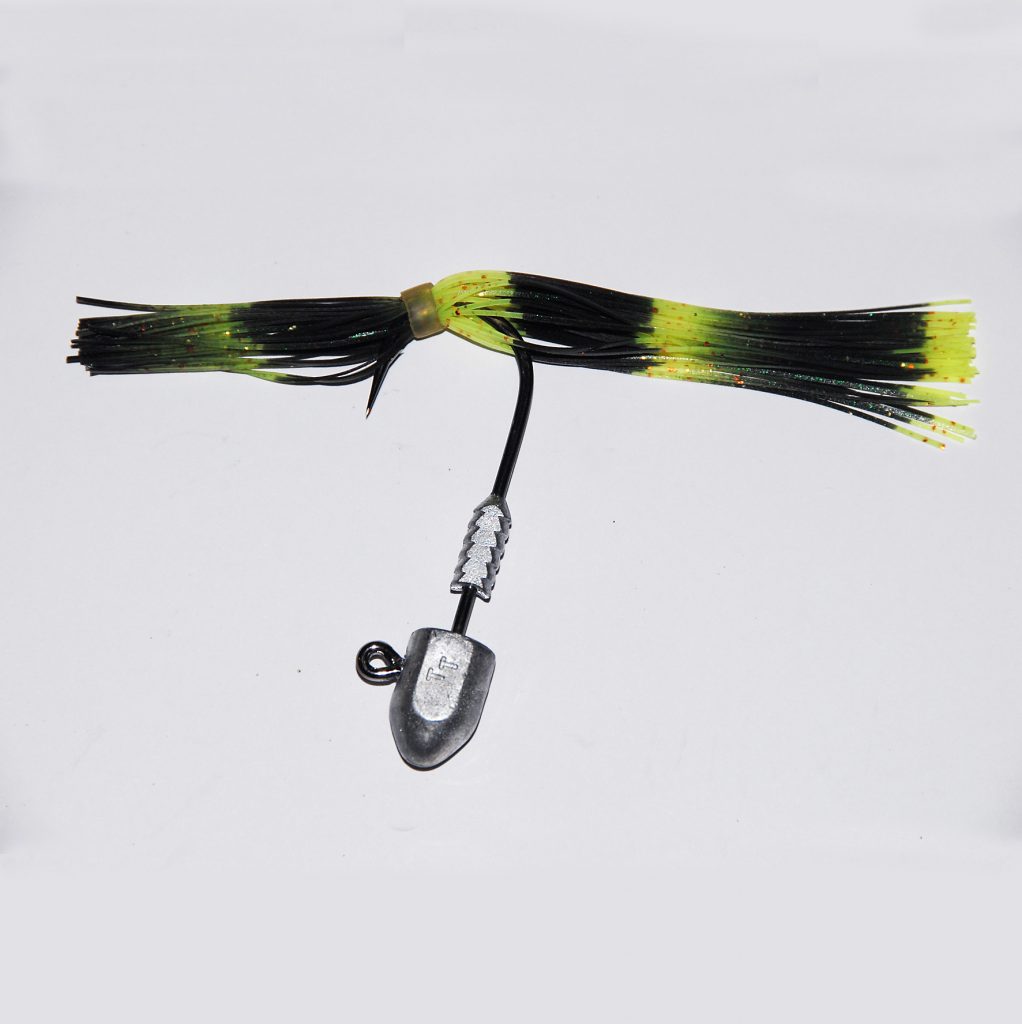
Step 4.
Push the skirt right up the hook shank and over the moulded keeper so that it sits on the shank directly behind the head. When the skirting material is folded back, the majority of the strands will be a similar length.

Step 5.
Put the soft plastic on the hook so that it is straight, as you would rig for normal use. Attach the TT HD Jig Blade to the eyelet of the jighead via the pigtail attachment. You would now attach your line with a blood knot or sliding uni knot to the small kink in the wire blade arm. This bait is now ready to fish with a slow rolling retrieve or a series of winds and pauses.
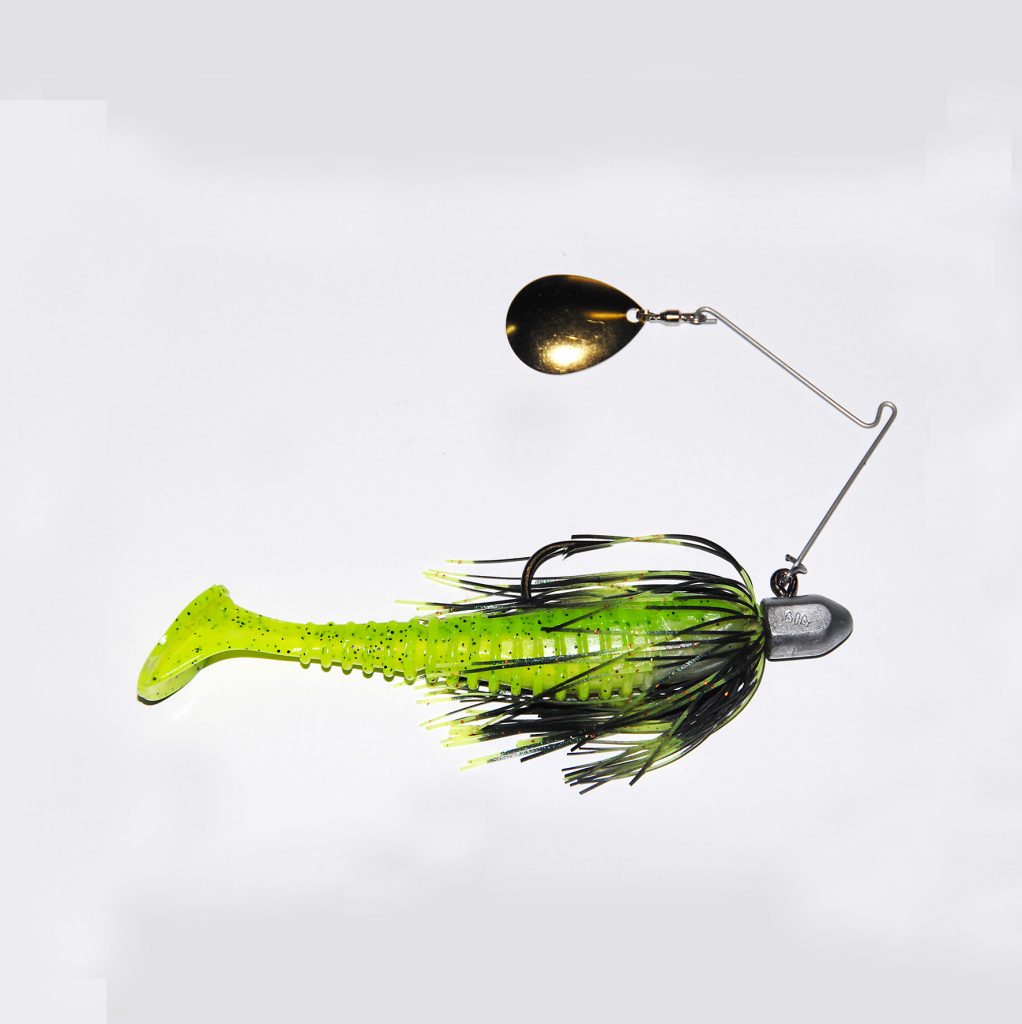
Step 6.
For this next creation you will need a TT 3/4oz 8/0 HeadlockZ jighead, spinnerbait skirt, TT Tribe Twin Jig Spinner no. 3 and a Chasebait 6” Curly Bait (in pearl prawn colour). With any of these jig spinner blade attachments you can also change out the blade (i.e. Colorado for willow) easily as they are attached to the arm with a small split ring.
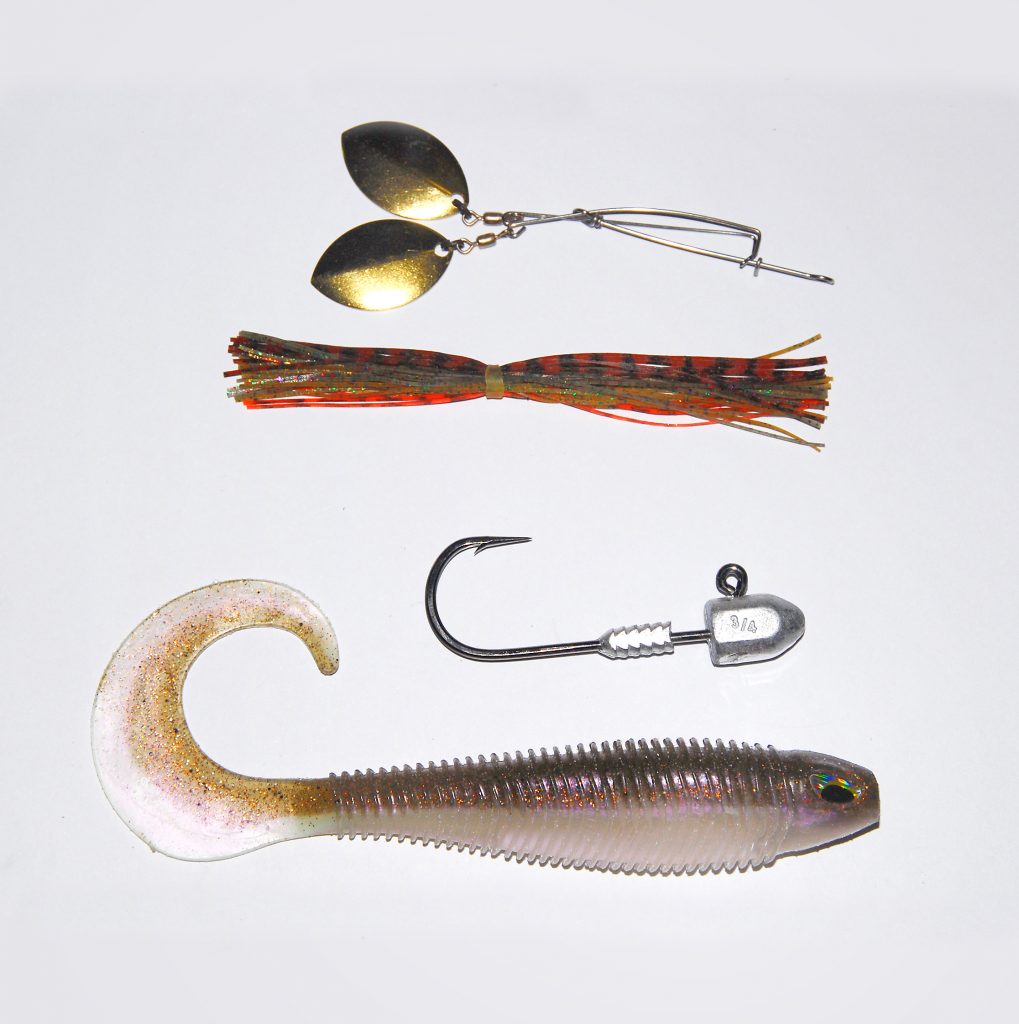
Step 7.
Put the skirt on the jighead as with the previous lure. Place the jighead beside the plastic to work out the hook placement keeping in mind that the plastic will just go to the back of the spinnerbait skirt, not the rear of the head.
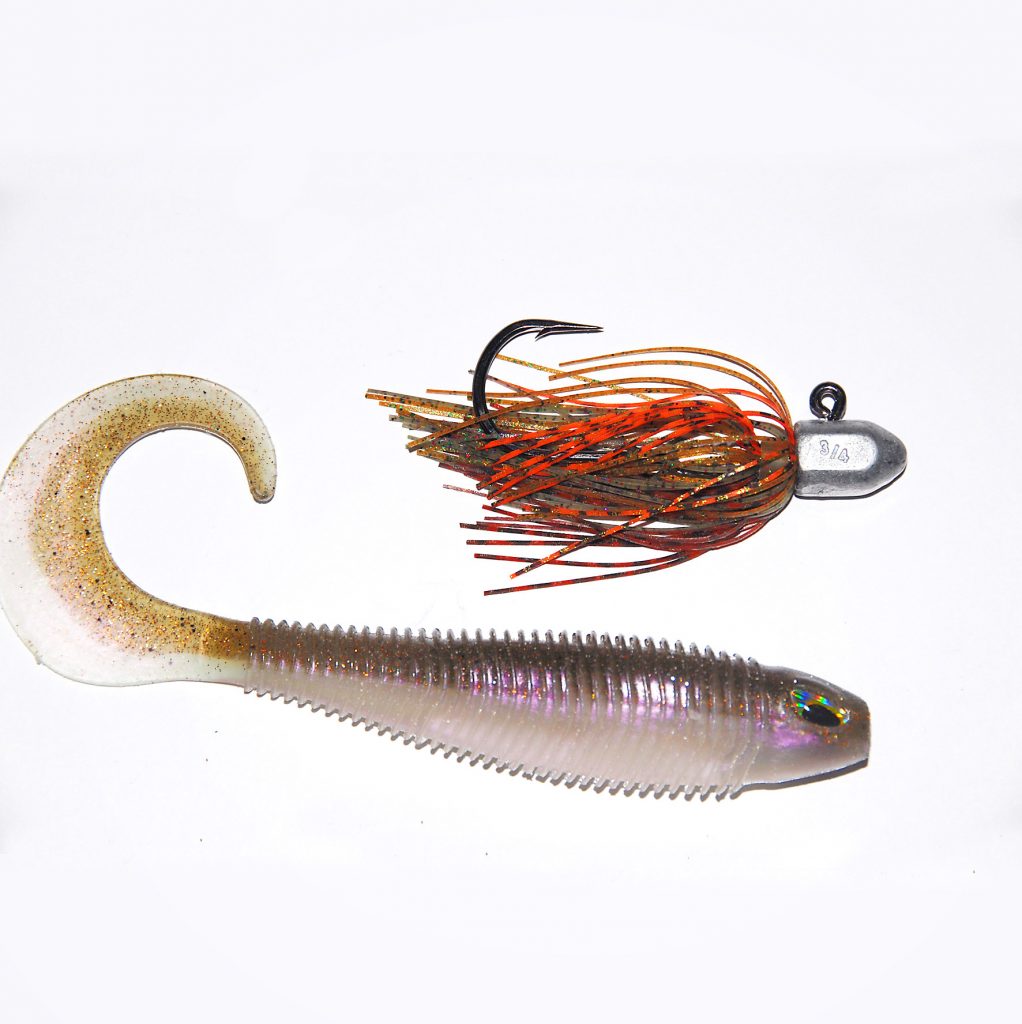
Step 8.
Put the plastic on the hook so that it’s straight and then slide the twin blade arms out so they spread and attach it to the eye of the jighead. You may want to widen the arms further to increase the profile of the bait. Your line will attach to the wire circle from which the two wire arms are protruding. This big bait is ideal for Murray cod.
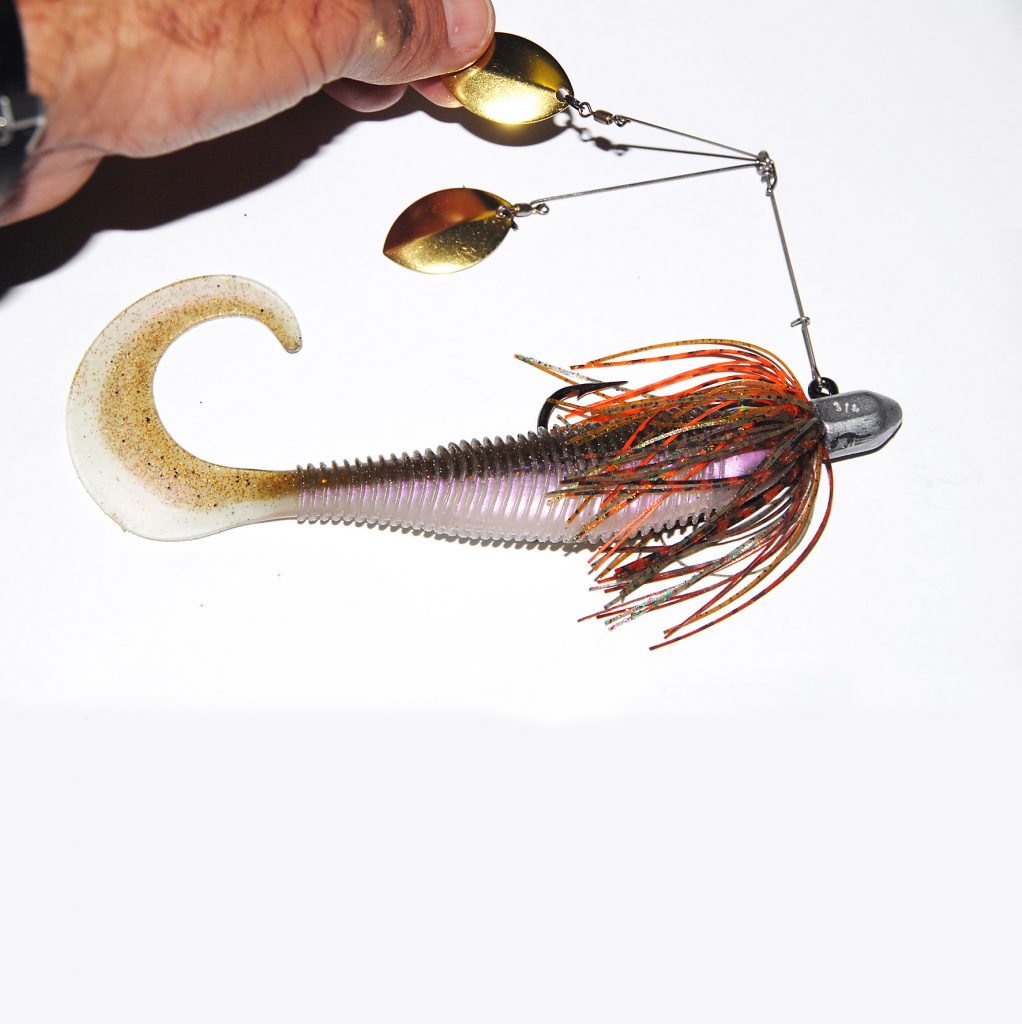
Step 11.
For our next offering, a bladed jig, we will use a Keitech Crazy Flapper 4.4”. This is a creature bait that doesn’t necessarily imitate anything too closely, yet it has a load of appeal. You’ll need to spread the tail pieces until it looks like this, as they are joined together for packaging purposes.
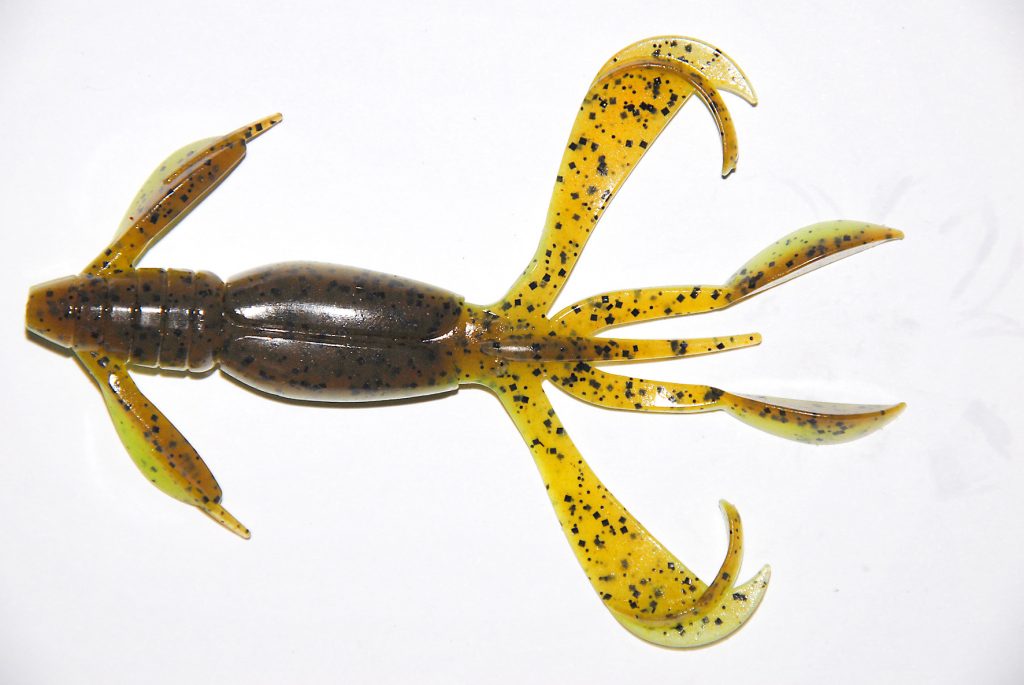
Step 12.
Put the spinnerbait skirt on the TT HeadlockZ 3/8oz 5/0XH jighead and then impale the plastic so that it presents straight as shown.
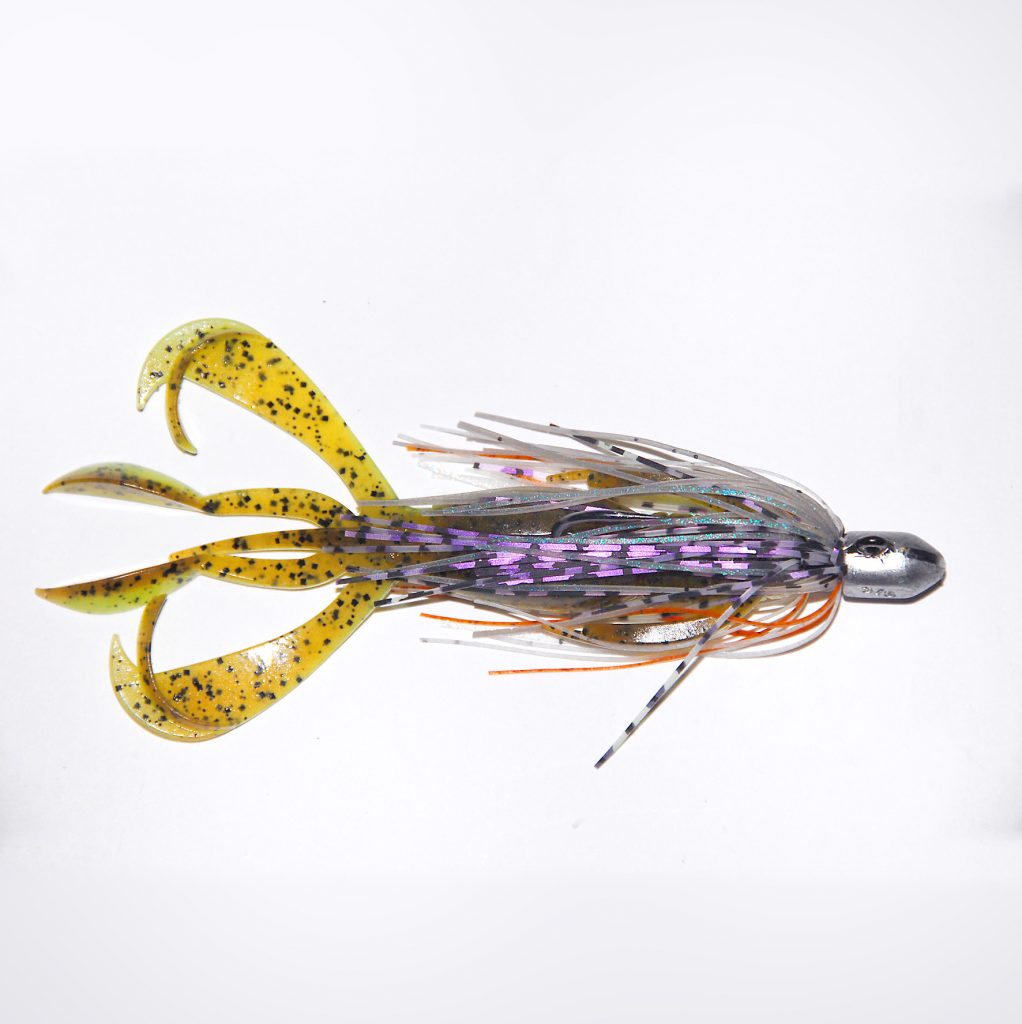
Step 11.
Put a Halco no. 4 Fish Ring on the eyelet of the hook. This is required because the eye of the jighead is at the wrong angle to attach the blade and you can’t open the eye of the jighead hook to put the blade straight onto it. However, using a split ring is a heavy duty rigging option for chasing cod and the like.
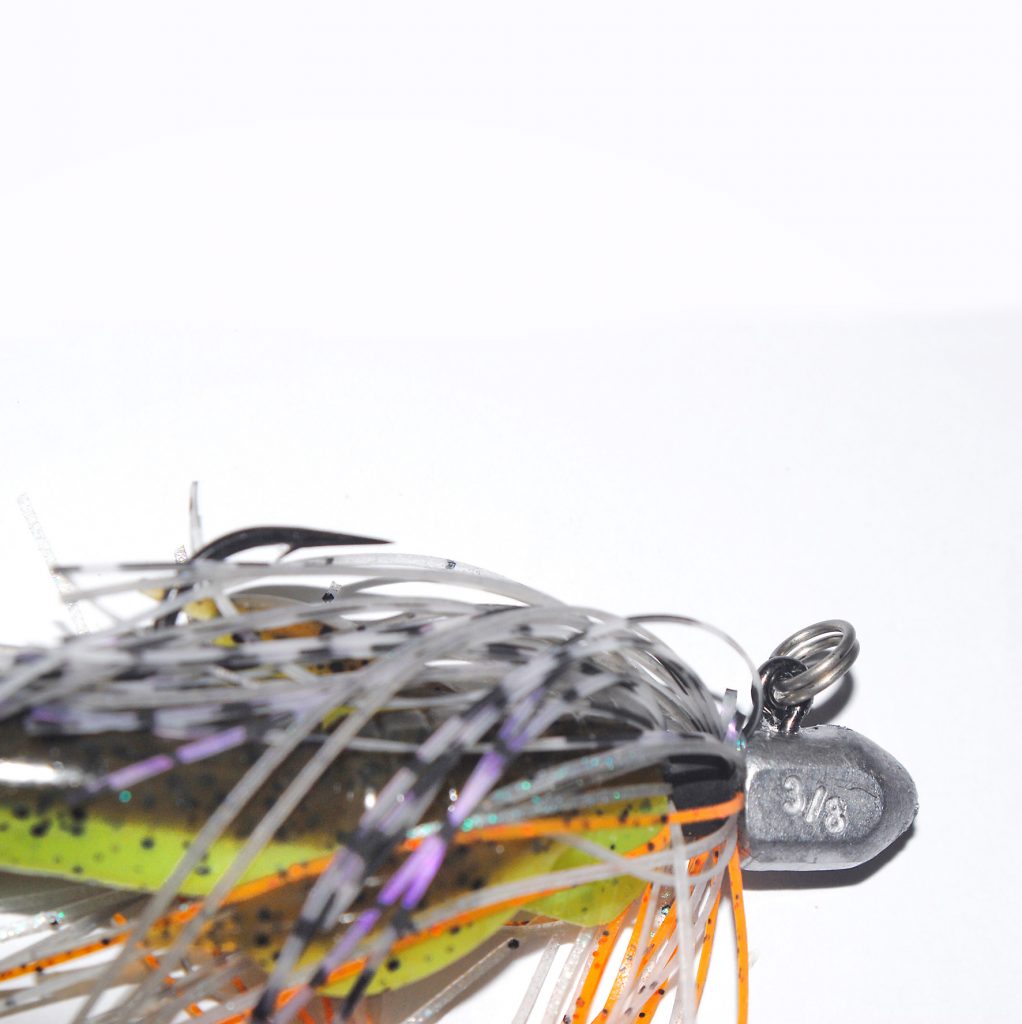
Step 12.
Put the Halco Crosslock no. 4 snap through the lower eyelet on the Decoy Flashin’ Blade (size L). Next put the snap swivel setup supplied with your blade through the other two holes from the curved side of the blade as shown and clip it shut. This supplied clip could also be replaced with another Halco Crosslock no. 4 snap.
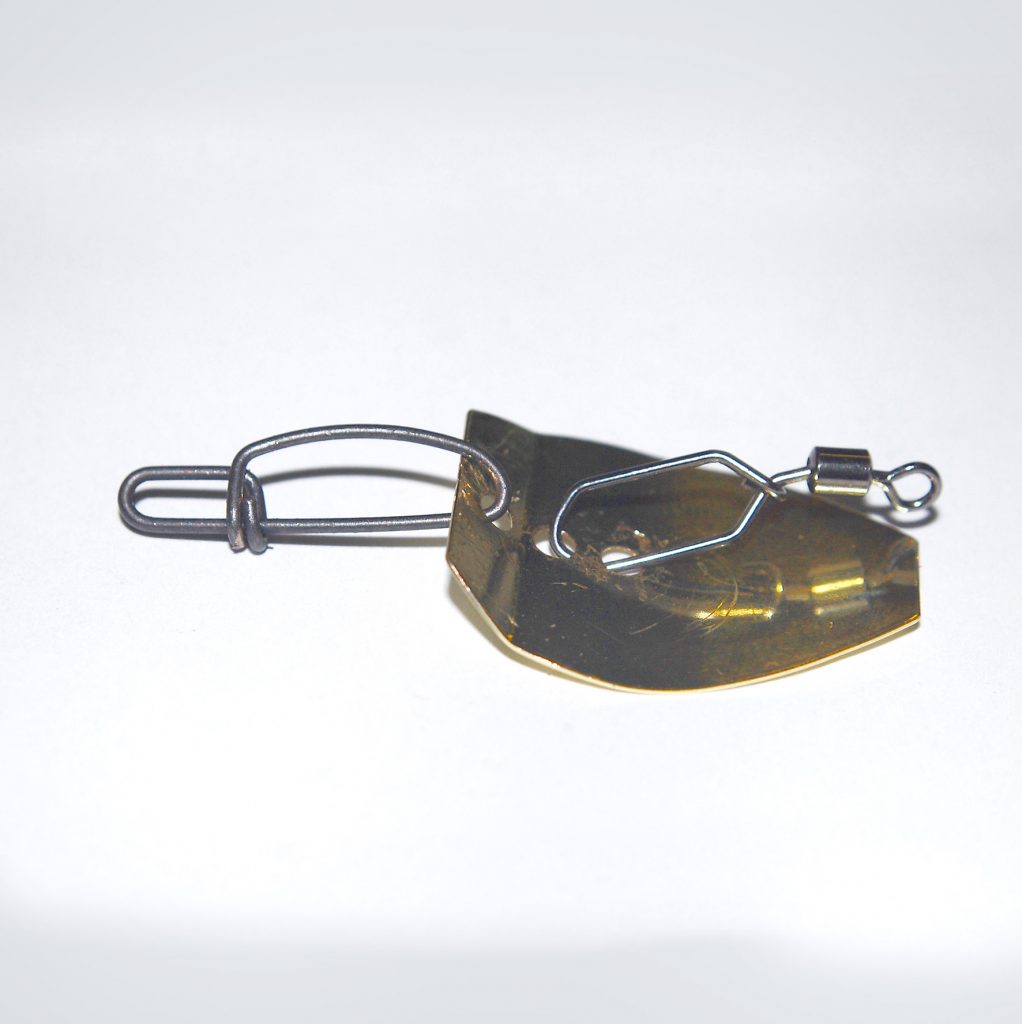
Step 13.
Attach the small end of the Halco snap to the split ring. Proper split ring pliers will make the task easier. Your bladed bait should look like this with the curvature of the blade facing forward. When hopped or slowly rolled the blade will rock from side to side, creating flash and vibration.
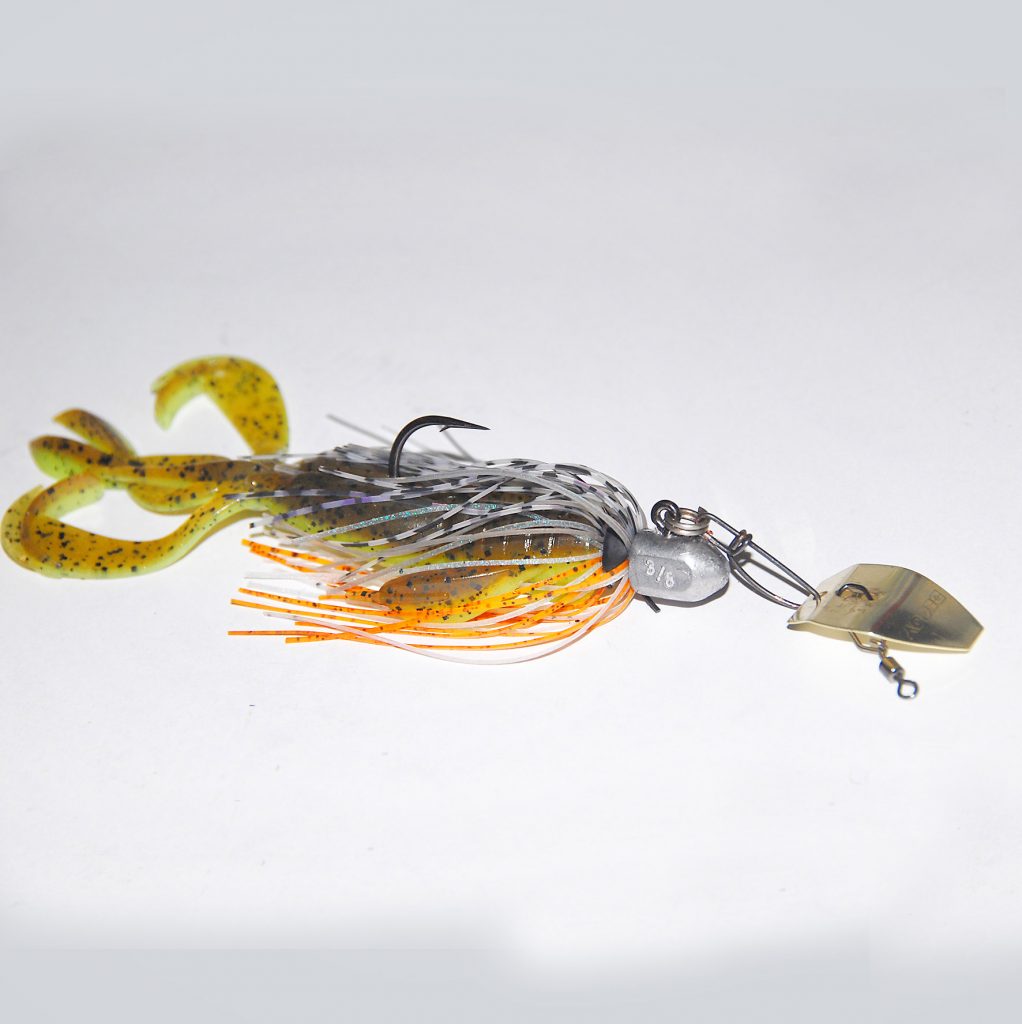
Step 14.
Another option for rigging this lure (say for use on line classes up to 10kg) for species such as bass, golden perch, flathead and the like is to replace the split ring and crosslock snap with a small Norman Speed clip. Once you have the blade setup you can easily add or remove it from any jighead-rigged bait by opening the Speed Clip.
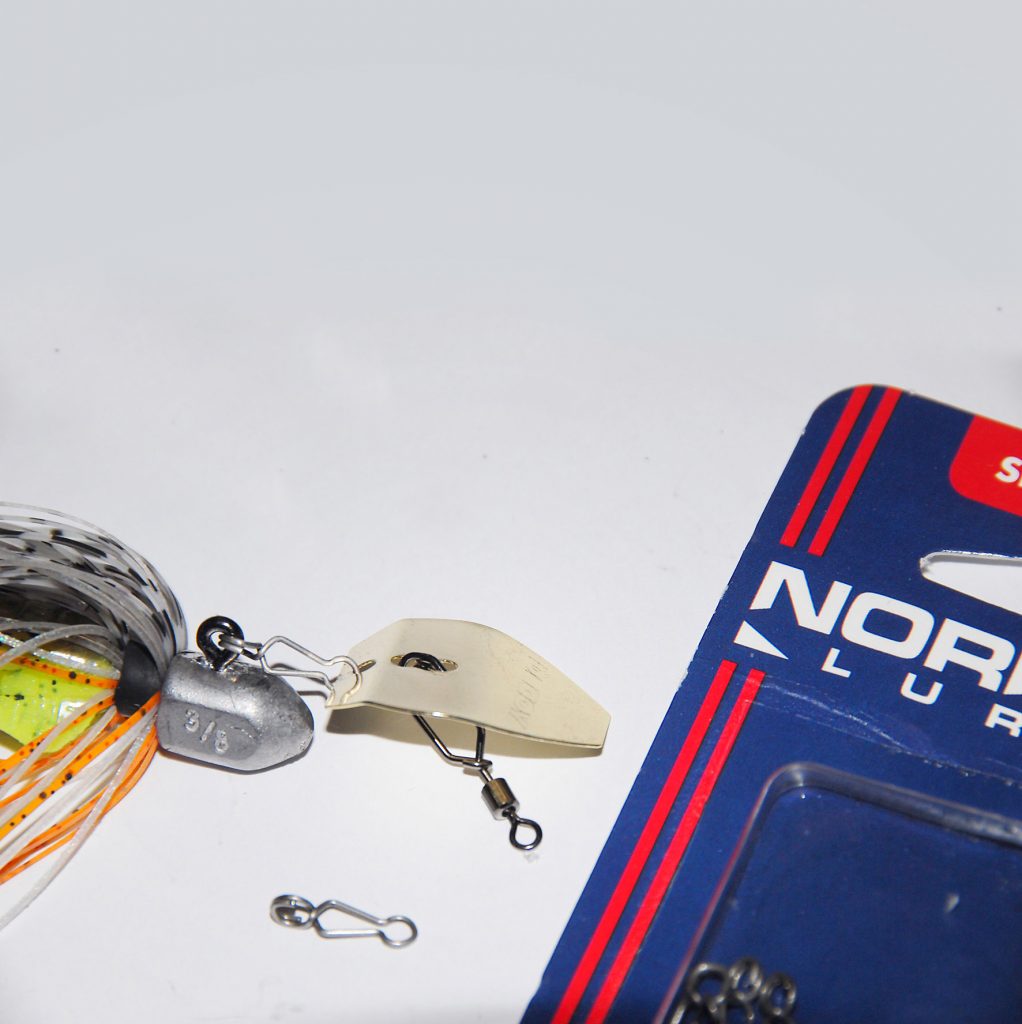
Step 15.
Similar to the first two lures, this offering is a smaller one that would suit bass, yellowbelly, saratoga and the like. This lure is made with the new Saltwater 3.7” PowerBait, a spinnerbait skirt, TT Jigspinner Blade #3 (standard guage) and a TT HeadlockZ 3/8oz 5/0XH jighead. Put the spinnerbait skirt on the jighead, and then the plastic on the hook.
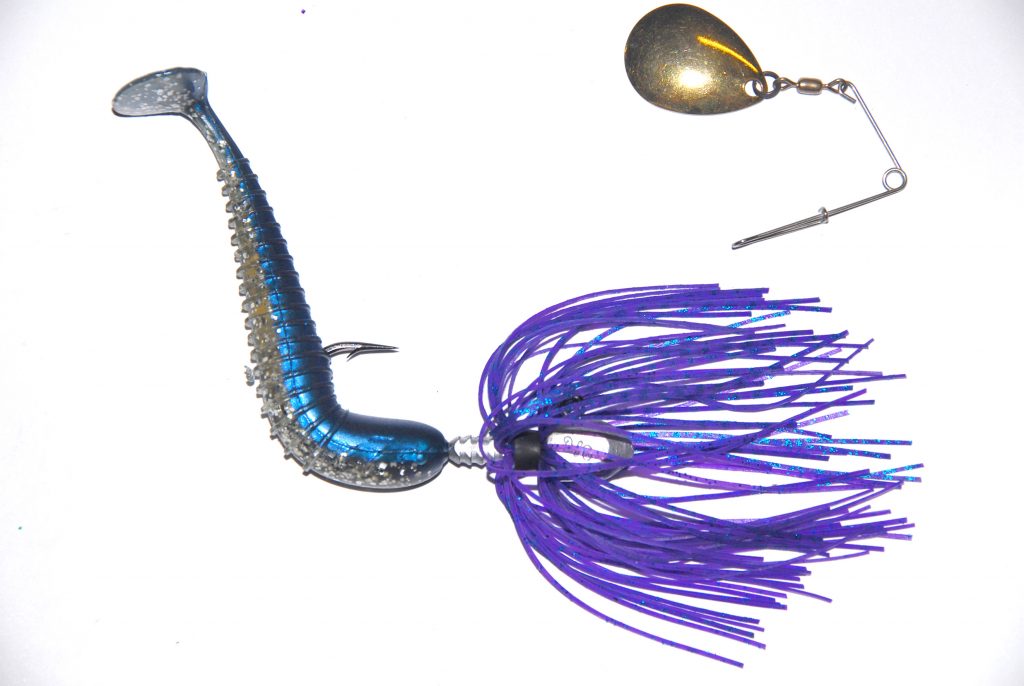
Step 16.
Push the plastic up onto the moulded keeper and fold back the skirt. Attach the blade to the eye on the jighead via the clip mechanism. You can trim the spinnerbait skirt a bit if you wish. The author likes the way the longer skirt pulses around the tail. Attach your line to the loop on the blade arm.
